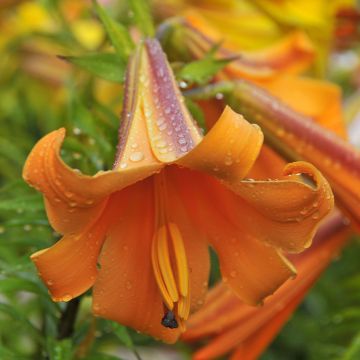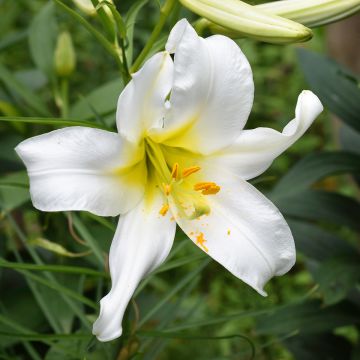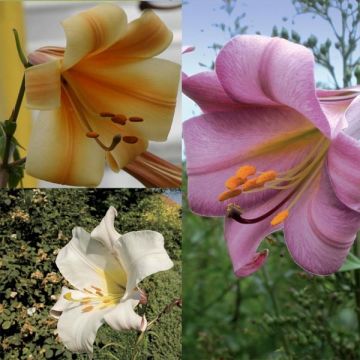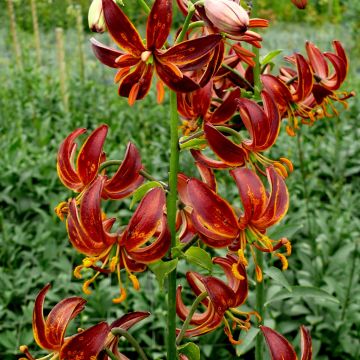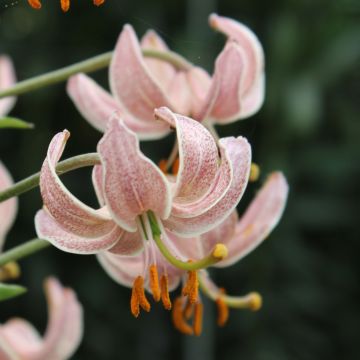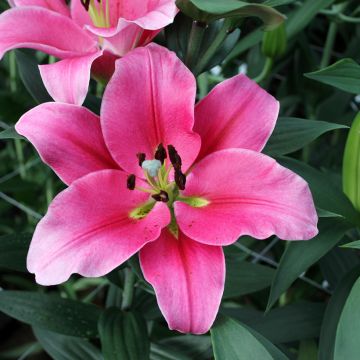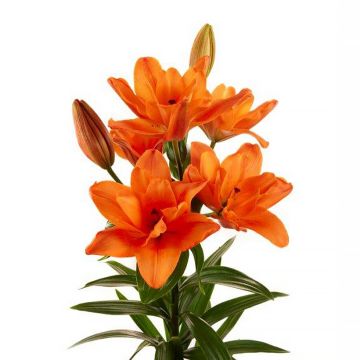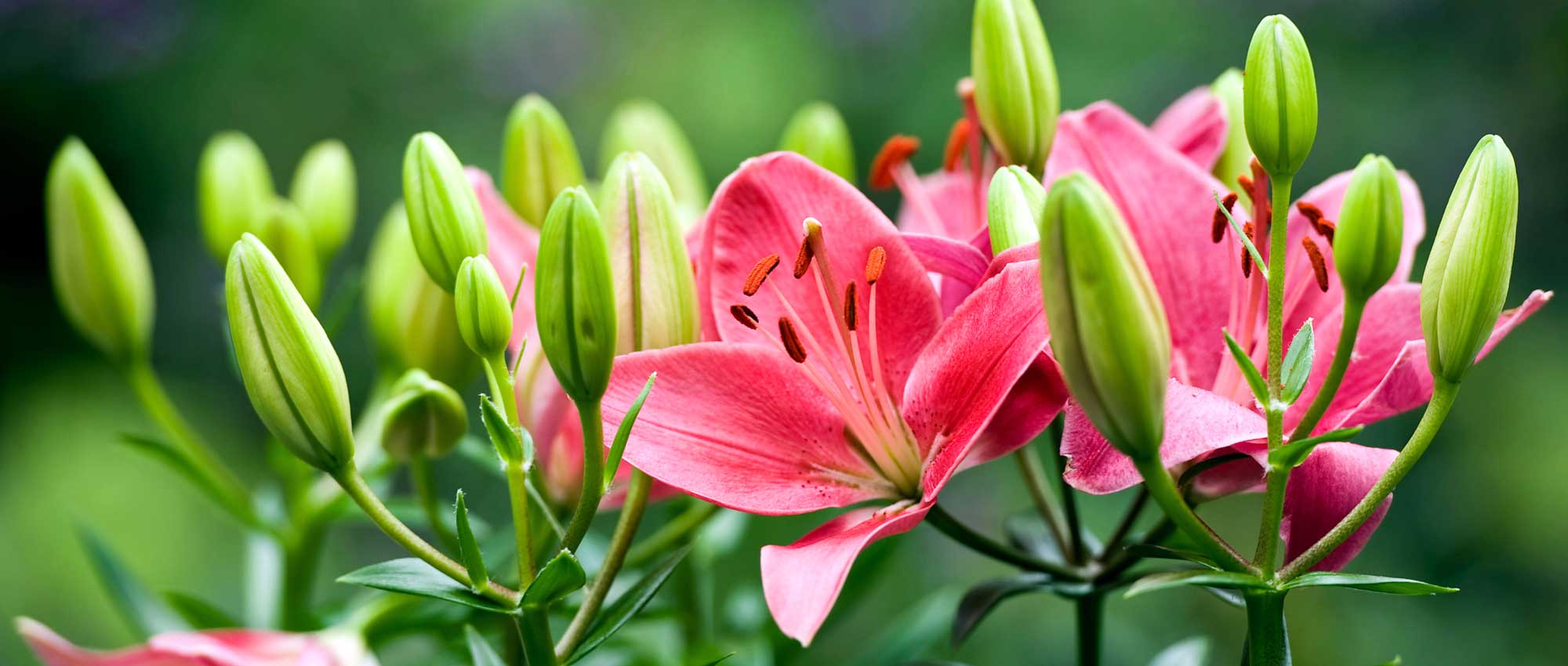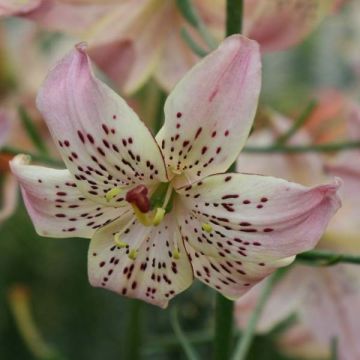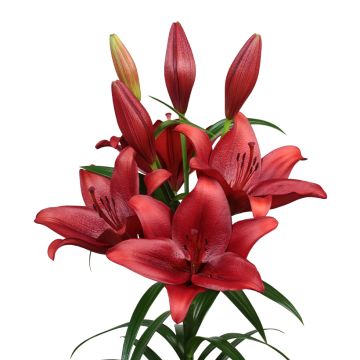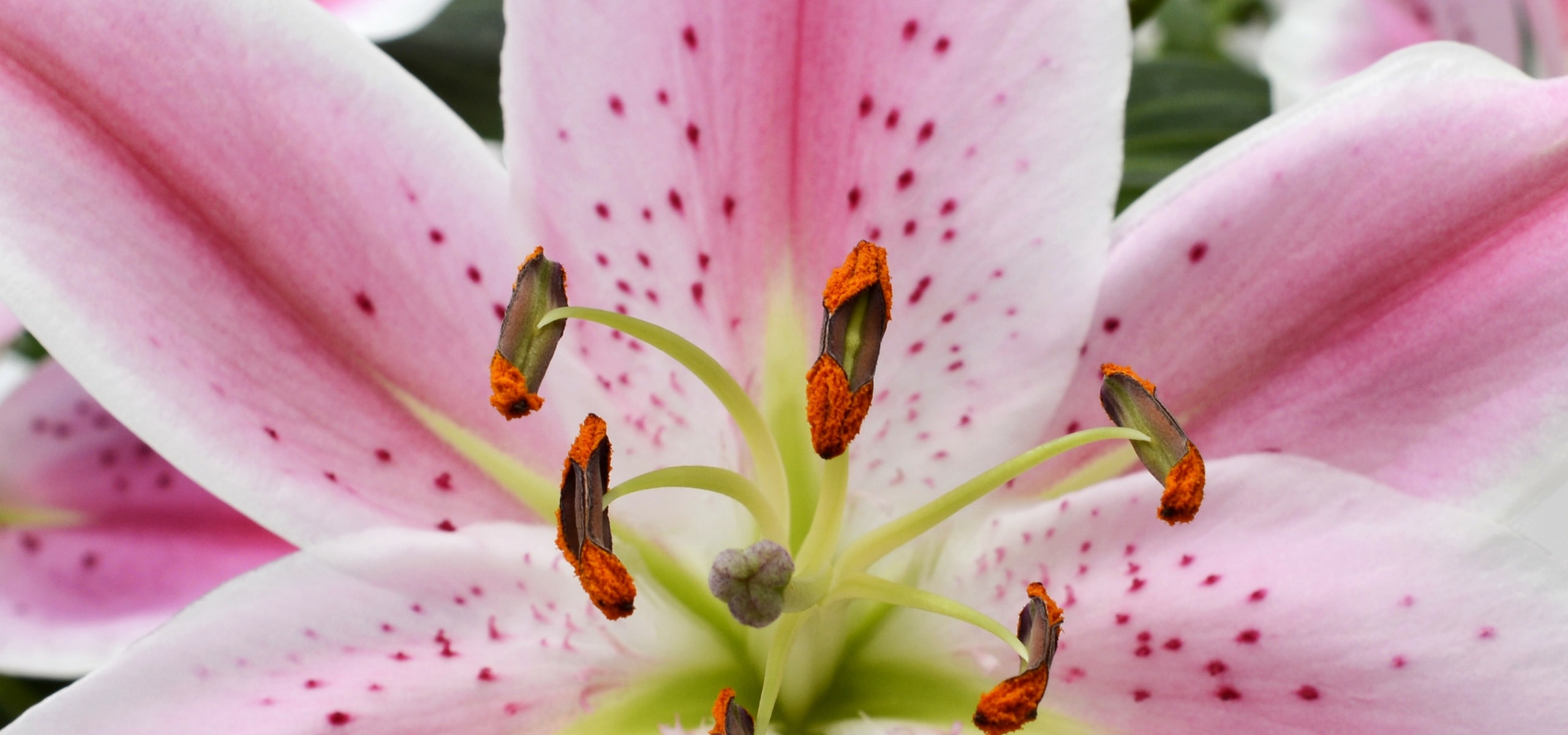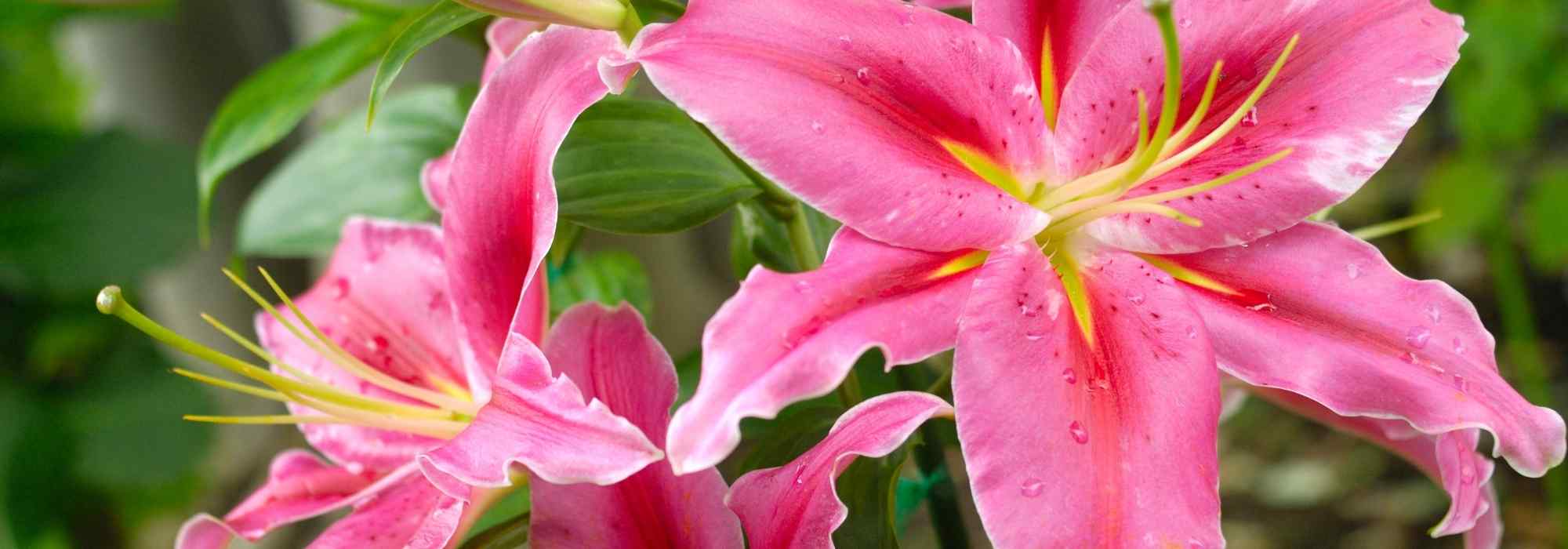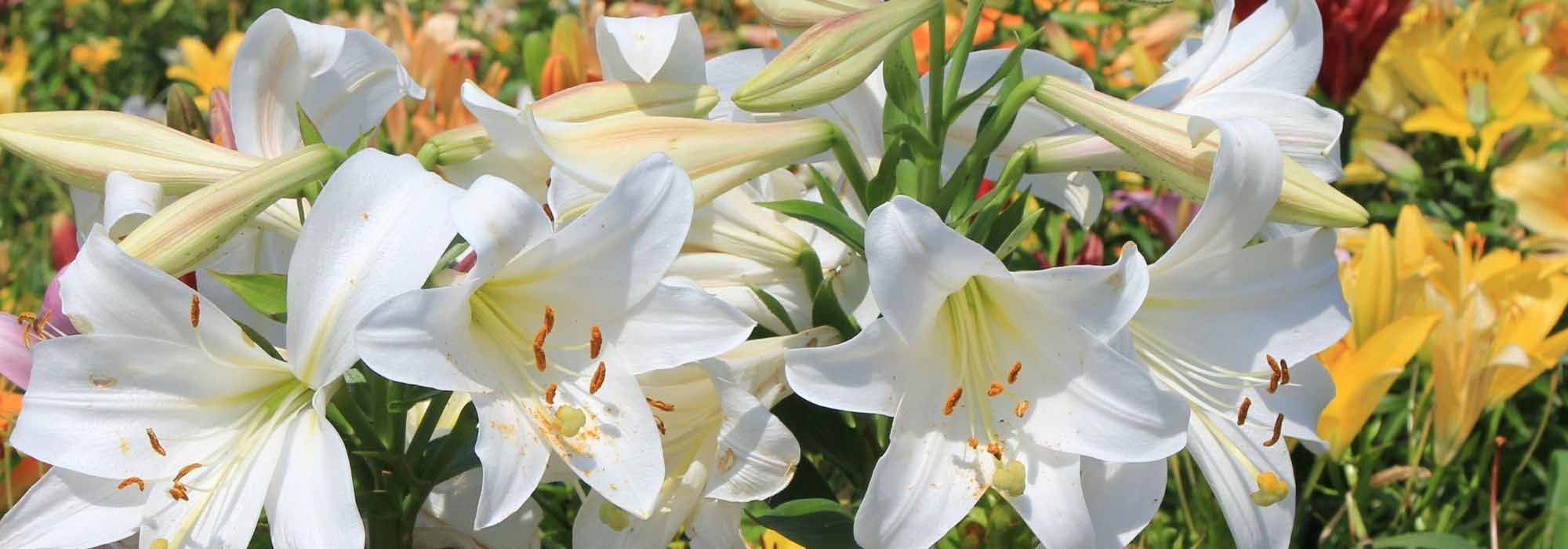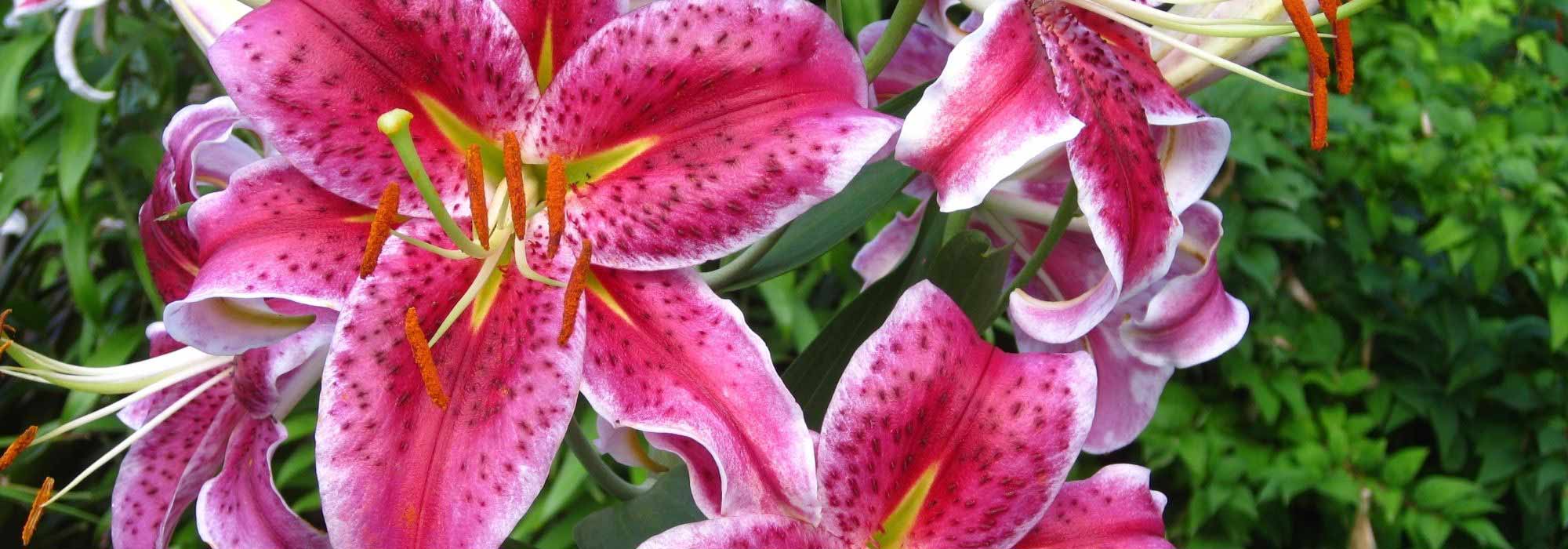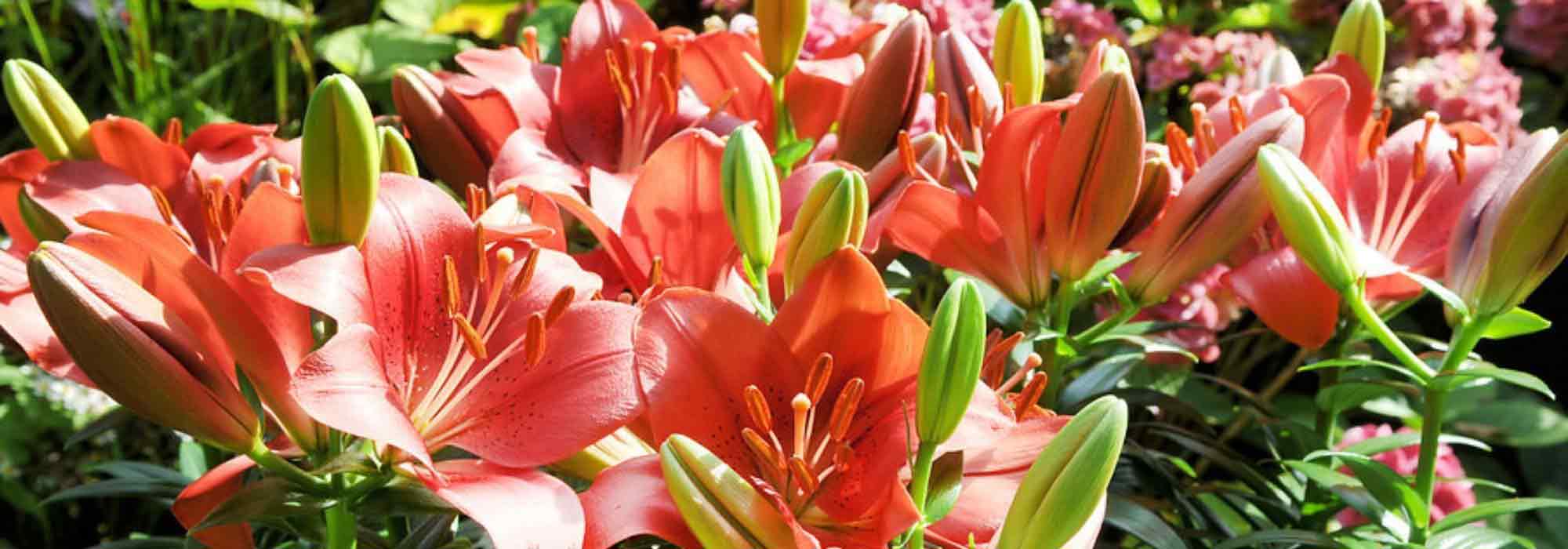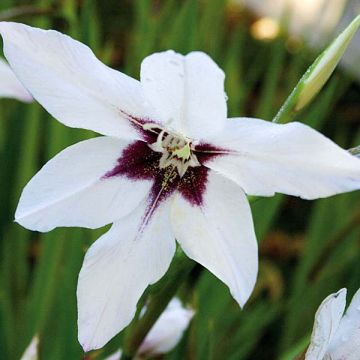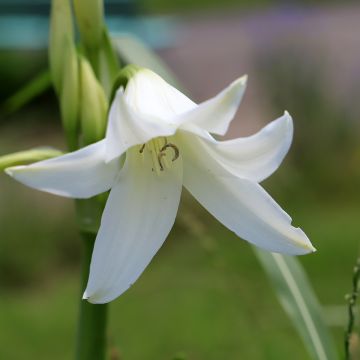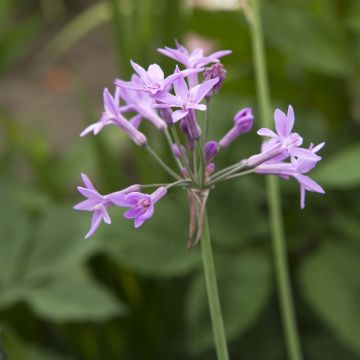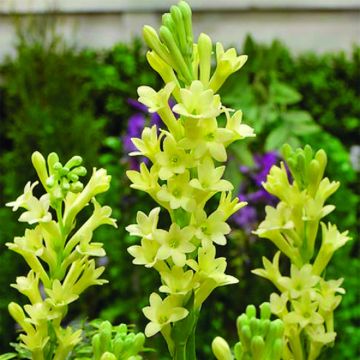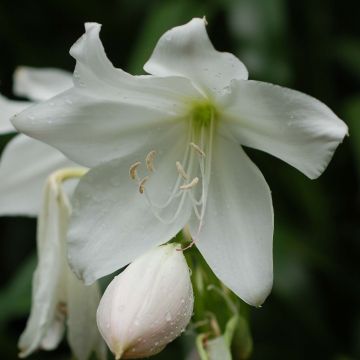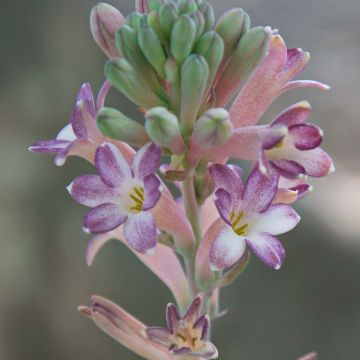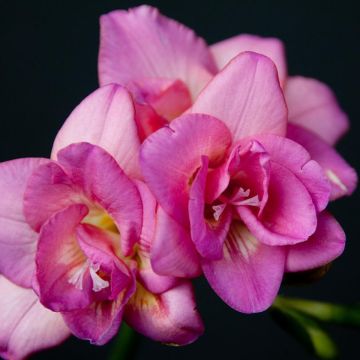In a flower bed, to enhance the flamboyance of the Lily 'Royal Sunset', pair it with warm tones. For example, plant the Crocosmia 'Lucifer' with intensely red flowers on long arched stems next to it. Add the Achillea millefolium 'Terracotta', more rustic, which offers umbels of a perfectly matched burnt orange with the warm tones of the 'Royal Sunset' lily. The finely cut foliage of Foeniculum vulgare 'Purpureum' (bronze fennel) will create a very flattering hazy background for its companions.
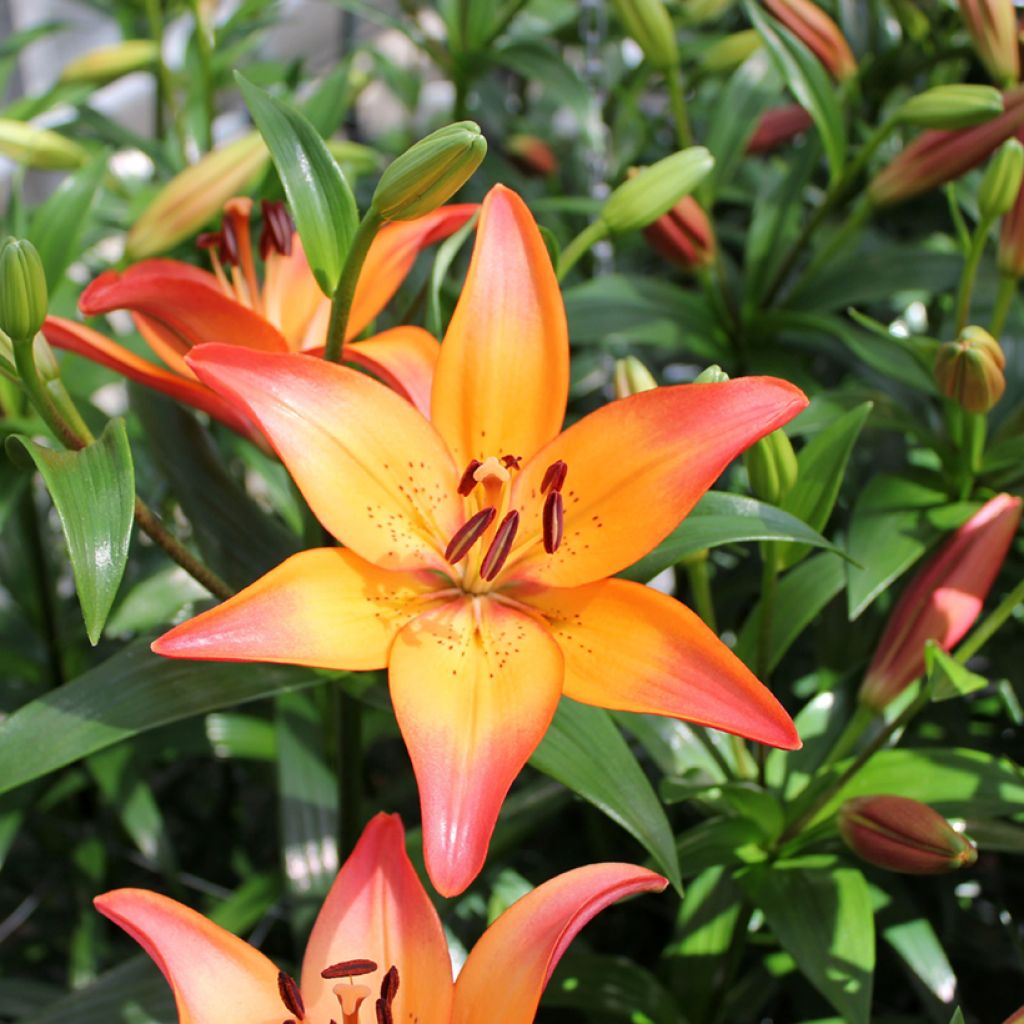

Lilium (x) longiflorum Royal Sunset - Easter Lily


Lilium (x) longiflorum Royal Sunset - Easter Lily
Share your pictures?
Hide split images
Lilium (x) longiflorum Royal Sunset - Easter Lily
Lilium (x) longiflorum Royal Sunset
Easter Lily, Longiflorum Lily
Be the first to leave a review
Special offer!
Receive a €20 voucher for any order over €90 (excluding delivery costs, credit notes, and plastic-free options)!
1- Add your favorite plants to your cart.
2- Once you have reached €90, confirm your order (you can even choose the delivery date!).
3- As soon as your order is shipped, you will receive an email containing your voucher code, valid for 3 months (90 days).
Your voucher is unique and can only be used once, for any order with a minimum value of €20, excluding delivery costs.
Can be combined with other current offers, non-divisible and non-refundable.
Why not try an alternative variety in stock?
View all →This plant carries a 6 months recovery warranty
More information
We guarantee the quality of our plants for a full growing cycle, and will replace at our expense any plant that fails to recover under normal climatic and planting conditions.
The flowers of this hybrid lily, upward-facing, display a bright pink colour around a wide neck of warm orange punctuated with brown around a yellow heart. They measure 10-15 cm in diameter and are lightly scented. It is a variety with long stems, a magnificent cut flower. It blooms in June-July. Plant the bulbs in well-drained, rich soil, in the sun.
Flower size
13 cm
Height at maturity
1.10 m
Spread at maturity
45 cm
Exposure
Sun
Hardiness
Hardy down to -18°C
Soil moisture
Moist soil
Would this plant suit my garden?
Set up your Plantfit profile →
Best planting time
April to May, October
Recommended planting time
February to May, October to November
JAN
J
FEB
F
MAR
M
APR
A
MAY
M
JUN
J
JUL
J
AUG
A
SEP
S
OCT
O
NOV
N
DEC
D
Flowering time
June to July
JAN
J
FEB
F
MAR
M
APR
A
MAY
M
JUN
J
JUL
J
AUG
A
SEP
S
OCT
O
NOV
N
DEC
D
Description
The Lily 'Royal Sunset', hybrid of Lilium Longiflorum and Asian, forms a very beautiful flower in the colours of the setting sun, slightly fragrant. Its long, sturdy stem will be adorned in summer with several cup-shaped flowers facing upwards, very long-lasting in a vase.
The Lily 'Royal Sunset' is a horticultural selection by JWA van der Wereld/World Flower BV (Netherlands) dating back to 1999. It is a bulbous plant with deciduous vegetation from the lily family. It is part of a group of hybrids derived from the species Lilium longiflorum and classic Asian lily cultivars. These highly valued varieties in floristry bear large, brightly coloured flowers, durable, often slightly fragrant. At full bloom, 'Royal Sunset' will reach between 90 cm and 1.20 m in height, depending on the bulb size and growing conditions. Over time, its vegetation will spread, with bulbs producing numerous bulblets through vegetative multiplication. Its 10 to 15 cm diameter flowers have petals of bright orange on the inside, with tips ranging from bright pink to light pink-red, sprinkled with a few small spots and brown papillae. The base of the petals is more golden. The outside of the petals displays a soft red, lightened along the midrib veins. The slightly ruffled and curved petals at their tips enhance the striking beauty of this variety. In the heart of the flower, the stamens are filled with intense reddish-brown pollen and the stigma is a bright orange. The long, glossy leaves, dark green, are narrow and lanceolate, with parallel veins running through them. The vegetation dries up in autumn, while the bulb goes into dormancy. The bulbs of this lily are reserve organs with fleshy overlapping scales.
Longiflorum hybrid lilies such as 'Royal Sunset' bloom after 12 or 13 weeks of cultivation, they can be "forced" by planting them early in the season in a veranda or a warm room. The soil they are planted in should remain moist throughout the growth and flowering period.
Plant habit
Height at maturity
1.10 m
Spread at maturity
45 cm
Growth rate
normal
Flowering
Flower colour
multicoloured
Flowering time
June to July
Inflorescence
Cluster
Flower size
13 cm
Fragrance
slightly scented
Bee-friendly
Attracts pollinators
Good for cut flowers
Cut flower blooms
Foliage
Foliage persistence
Deciduous
Foliage colour
dark green
Botanical data
Genus
Lilium
Species
(x) longiflorum
Cultivar
Royal Sunset
Family
Liliacées
Other common names
Easter Lily, Longiflorum Lily
Origin
Cultivar or hybrid
Product reference
•
234410
Other Lilies A to Z
View all →Planting and care
The Lilium longiflorum 'Royal Sunset' prefers soils that are moist and rich in humus, it does not appreciate very dry, poor, or poorly drained and very clayey soils. It is a variety that tolerates cold well. You will plant it in the sun, in spring or early autumn, burying the bulbs 15 cm deep (two to three times the size of the bulb) in a pocket of soil mixed with leaf compost. Surround them with a pocket of sand to prevent rot and slug attacks, while allowing them to grow more easily. Mark the planting location, as growth only starts in April.
Growing in a deep pot allows the plant to overwinter in an unheated, cool, but frost-free place. This method also allows for "forcing" the bulb, meaning advancing the start of vegetation growth and the flowering period. To do this, the pot will be stored in a very bright and slightly heated place before the beginning of spring.
When the stems reach 30 cm high, discreetly stake them. If red insects appear, treat them promptly; they are lily beetles whose larvae can devour all the leaves. The most effective method is to catch them by hand, but be careful, they drop as soon as they are touched, so place a box underneath. After flowering, it is useful to cut the faded flowers halfway to keep the bed beautiful during the summer.
Planting period
Best planting time
April to May, October
Recommended planting time
February to May, October to November
Planting depth
15 cm
Intended location
Suitable for
Meadow
Type of use
Border, Container, Greenhouse
Hardiness
Hardy down to -18°C (USDA zone 7a)
Show map
Ease of cultivation
Amateur
Planting density
6 per m2
Exposure
Sun
Soil pH
Neutral
Soil moisture
Moist soil, humus-bearing, sandy, fertile, well-drained
Care
Pruning instructions
Prune the faded stems after flowering.
Pruning
Pruning recommended once a year
Pruning time
July to August
Soil moisture
Moist soil
Disease resistance
Good
Overwinter
Can be left in the ground
Planting & care advice
This item has not been reviewed yet - be the first to leave a review about it.
Leave a review →
Share your review
Similar products
Haven't found what you were looking for?
Hardiness is the lowest winter temperature a plant can endure without suffering serious damage or even dying. However, hardiness is affected by location (a sheltered area, such as a patio), protection (winter cover) and soil type (hardiness is improved by well-drained soil).

Photo Sharing Terms & Conditions
In order to encourage gardeners to interact and share their experiences, Promesse de fleurs offers various media enabling content to be uploaded onto its Site - in particular via the ‘Photo sharing’ module.
The User agrees to refrain from:
- Posting any content that is illegal, prejudicial, insulting, racist, inciteful to hatred, revisionist, contrary to public decency, that infringes on privacy or on the privacy rights of third parties, in particular the publicity rights of persons and goods, intellectual property rights, or the right to privacy.
- Submitting content on behalf of a third party;
- Impersonate the identity of a third party and/or publish any personal information about a third party;
In general, the User undertakes to refrain from any unethical behaviour.
All Content (in particular text, comments, files, images, photos, videos, creative works, etc.), which may be subject to property or intellectual property rights, image or other private rights, shall remain the property of the User, subject to the limited rights granted by the terms of the licence granted by Promesse de fleurs as stated below. Users are at liberty to publish or not to publish such Content on the Site, notably via the ‘Photo Sharing’ facility, and accept that this Content shall be made public and freely accessible, notably on the Internet.
Users further acknowledge, undertake to have ,and guarantee that they hold all necessary rights and permissions to publish such material on the Site, in particular with regard to the legislation in force pertaining to any privacy, property, intellectual property, image, or contractual rights, or rights of any other nature. By publishing such Content on the Site, Users acknowledge accepting full liability as publishers of the Content within the meaning of the law, and grant Promesse de fleurs, free of charge, an inclusive, worldwide licence for the said Content for the entire duration of its publication, including all reproduction, representation, up/downloading, displaying, performing, transmission, and storage rights.
Users also grant permission for their name to be linked to the Content and accept that this link may not always be made available.
By engaging in posting material, Users consent to their Content becoming automatically accessible on the Internet, in particular on other sites and/or blogs and/or web pages of the Promesse de fleurs site, including in particular social pages and the Promesse de fleurs catalogue.
Users may secure the removal of entrusted content free of charge by issuing a simple request via our contact form.
The flowering period indicated on our website applies to countries and regions located in USDA zone 8 (France, the United Kingdom, Ireland, the Netherlands, etc.)
It will vary according to where you live:
- In zones 9 to 10 (Italy, Spain, Greece, etc.), flowering will occur about 2 to 4 weeks earlier.
- In zones 6 to 7 (Germany, Poland, Slovenia, and lower mountainous regions), flowering will be delayed by 2 to 3 weeks.
- In zone 5 (Central Europe, Scandinavia), blooming will be delayed by 3 to 5 weeks.
In temperate climates, pruning of spring-flowering shrubs (forsythia, spireas, etc.) should be done just after flowering.
Pruning of summer-flowering shrubs (Indian Lilac, Perovskia, etc.) can be done in winter or spring.
In cold regions as well as with frost-sensitive plants, avoid pruning too early when severe frosts may still occur.
The planting period indicated on our website applies to countries and regions located in USDA zone 8 (France, United Kingdom, Ireland, Netherlands).
It will vary according to where you live:
- In Mediterranean zones (Marseille, Madrid, Milan, etc.), autumn and winter are the best planting periods.
- In continental zones (Strasbourg, Munich, Vienna, etc.), delay planting by 2 to 3 weeks in spring and bring it forward by 2 to 4 weeks in autumn.
- In mountainous regions (the Alps, Pyrenees, Carpathians, etc.), it is best to plant in late spring (May-June) or late summer (August-September).
The harvesting period indicated on our website applies to countries and regions in USDA zone 8 (France, England, Ireland, the Netherlands).
In colder areas (Scandinavia, Poland, Austria...) fruit and vegetable harvests are likely to be delayed by 3-4 weeks.
In warmer areas (Italy, Spain, Greece, etc.), harvesting will probably take place earlier, depending on weather conditions.
The sowing periods indicated on our website apply to countries and regions within USDA Zone 8 (France, UK, Ireland, Netherlands).
In colder areas (Scandinavia, Poland, Austria...), delay any outdoor sowing by 3-4 weeks, or sow under glass.
In warmer climes (Italy, Spain, Greece, etc.), bring outdoor sowing forward by a few weeks.































